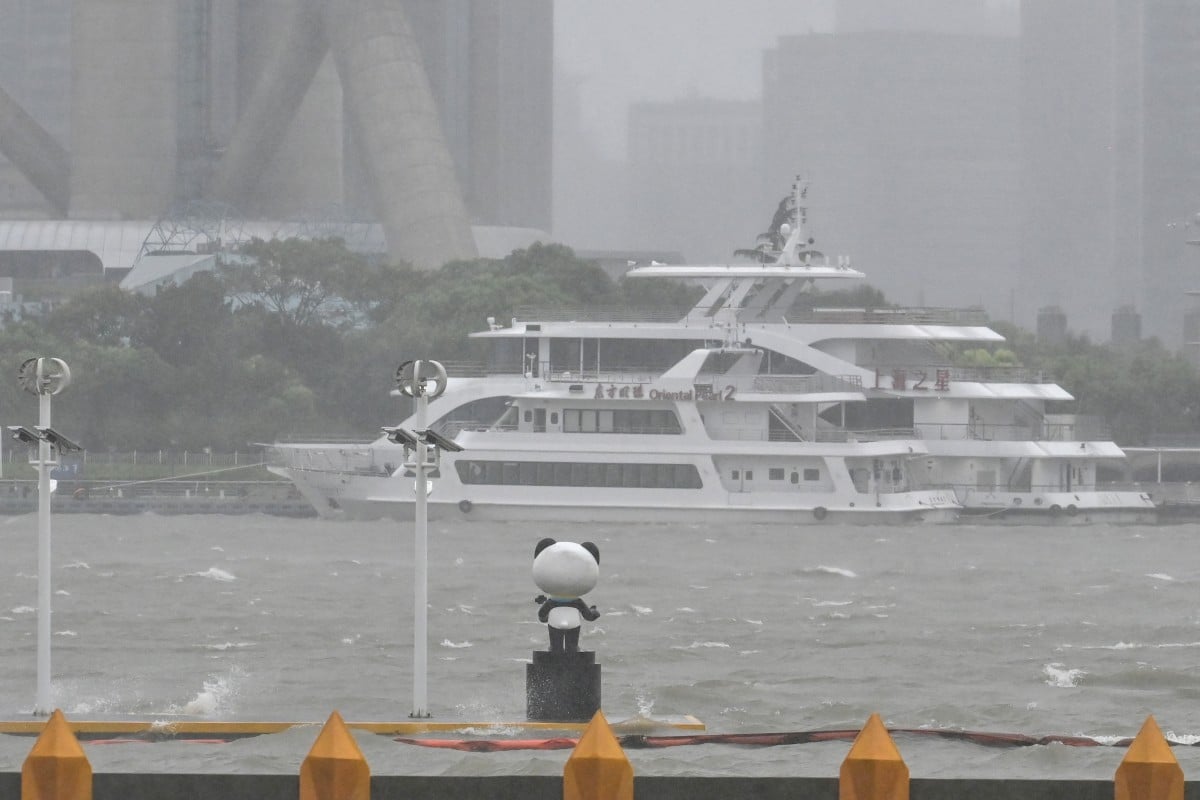Strongest typhoon to hit Shanghai since 1949 shuts down megacity

Moored boats (background) are seen past waves and whitecaps on the Huangpu river during the passage of Typhoon Bebinca in Shanghai on September 16, 2024. The strongest storm to hit Shanghai in over 70 years made landfall on September 16, state media reported, with flights cancelled and highways closed as Typhoon Bebinca lashed the city with strong winds and torrential rains. Agence France-Presse
SHANGHAI — Tens of millions of people in Shanghai and across China’s densely populated east coast hunkered indoors Monday as the strongest storm to hit since 1949 swept in, downing trees and disrupting transport across the region.
Typhoon Bebinca landed early Monday morning in the city’s eastern coastal area, with wind speeds of up to 151 kilometers per hour (94 miles per hour), state media said.
It is the strongest storm to hit Shanghai since Typhoon Gloria in 1949, state broadcaster CCTV said shortly after Bebinca made landfall.
READ: Ferdie exits PAR but rains still likely as it boosts southwest monsoon
Many businesses were already closed for the Mid-Autumn Festival public holiday, and the city’s 25 million residents have been advised to avoid leaving their homes.
Shanghai’s flood control headquarters told CCTV they had already received dozens of reports of incidents related to the typhoon — mostly fallen trees and billboards.
An uprooted tree completely blocked one road in the city centre, an AFP reporter saw.
Ferocious winds
Xiong Zhuowu, a doctor and resident of the northern Baoshan district, posted a video of a real estate agent’s sign being ripped away onto a roof in his compound.
READ: Storm Ferdie, habagat kill 6 persons, affect over 203,000
“I feel quite nervous today, I’m constantly checking what the situation is out the window,” Xiong told AFP.
“The property management found some trees with loose roots downstairs and immediately called me to move my car to prevent the tree hitting it if it fell.”
A government livefeed from Baoshan showed ferocious winds ripping through a line of trees on the riverbank.
Despite the violent downpours and sudden gusts of wind, some were still braving the weather to go about errands.
Resident Wu Yun said she had ventured outside because she had to sort something out at her sales job.
“I think it’s okay, because I also saw a lot of typhoons in the south, so I think Shanghai is okay (compared to them),” she told AFP as she struggled to open her umbrella against the wind.
Branches and fallen bikes littered the road in the city’s former French Concession, as delivery workers and clean-up crews persevered against the driving rain.
Flights grounded
All flights at Shanghai’s two main airports are grounded, and ferry services and some trains have been suspended.
Highways were closed at 1 am local time, and a 40 kilometer (25 mile) per hour speed limit is in place on roads inside the city.
At rush hour, live video feeds showed Shanghai’s normally jammed roads almost empty of traffic, and its famed skyline obscured by thick fog.
Nine thousand residents have been evacuated from Chongming District, an island at the mouth of the Yangtze River, authorities said.
CCTV broadcast footage of a reporter by the coast in neighboring Zhejiang province, where waves pounded the craggy coastline under leaden skies.
“If I step out into (the storm), I can barely speak,” the reporter said.
“You can see that the surface of the sea is just wave after wave, each higher than the last.”
Another typhoon, Yagi, killed at least four people and injured 95 when it passed through China’s southern Hainan island this month, according to national weather authorities.
Bebinca has also passed through Japan and the central and southern Philippines, where falling trees killed six people.
CCTV said Bebinca was expected to move northwest, causing heavy rain and high winds in Jiangsu, Zhejiang and Anhui provinces.
China is the world’s biggest emitter of the greenhouse gases that scientists say are driving climate change and making extreme weather more frequent and intense.